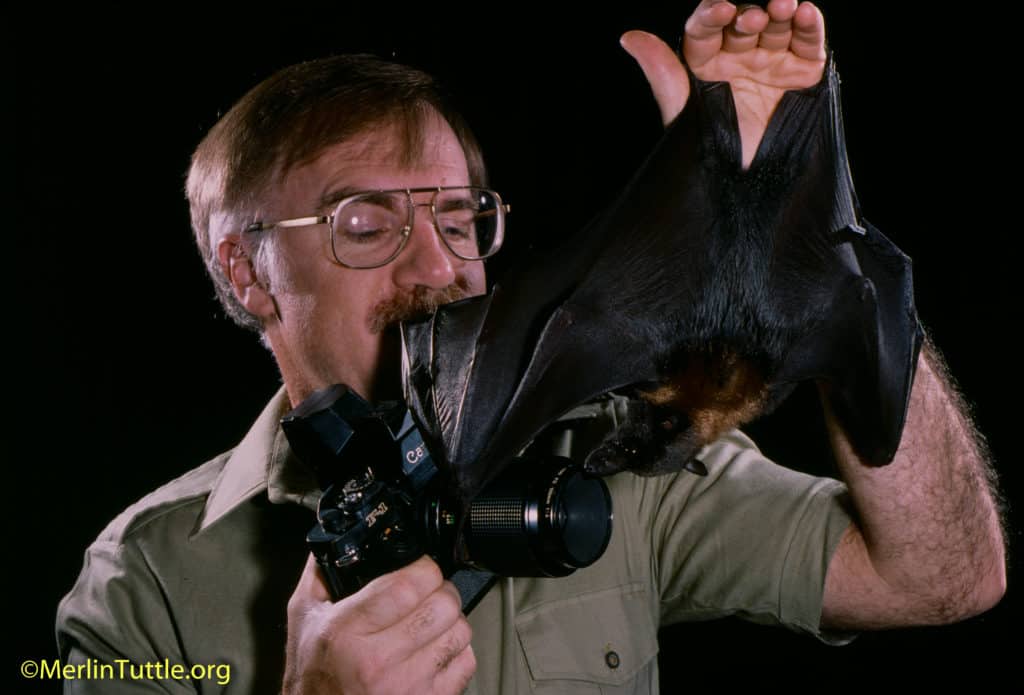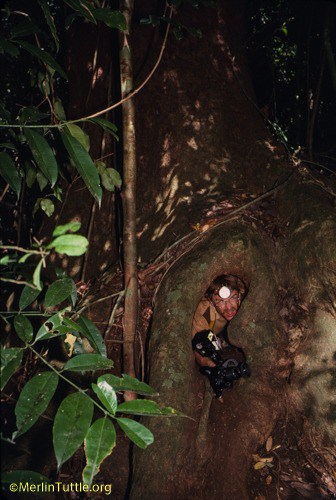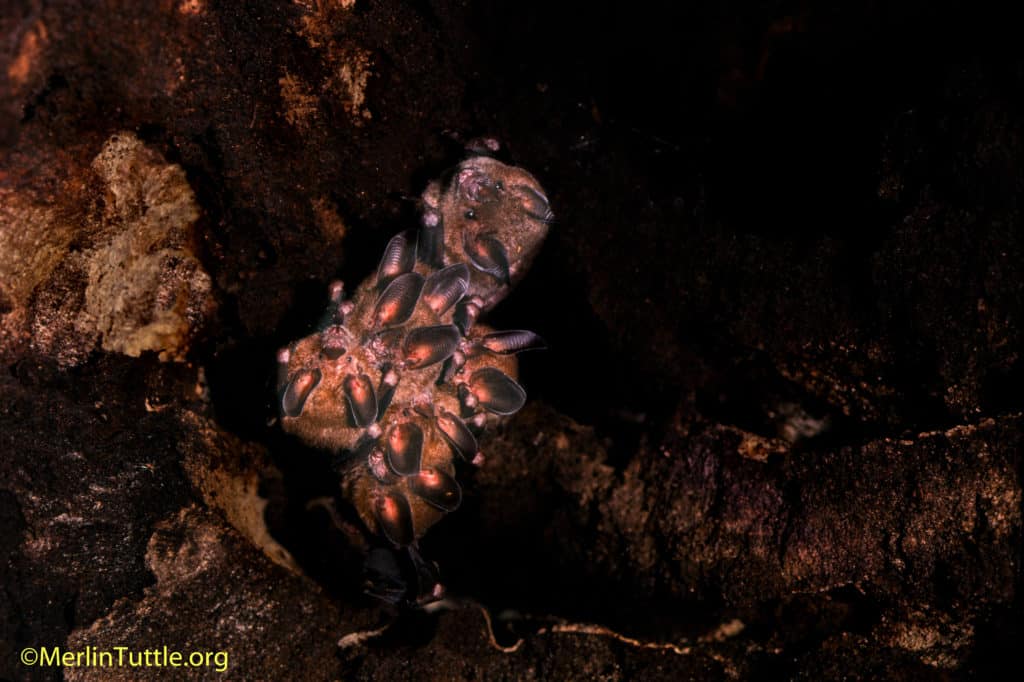Why Don’t Bats Get Cancer? How bat research could transform human aging and cancer treatment…
Bats are the longest-lived mammals for their size, with species like the little brown bat (Myotis lucifugus) surviving over 30 years in the wild. Even
The July 11, 2018 edition of Smithsonian.com contains another highly misleading story on virus hunters protecting us from pandemics. The story by Katherine J. Wu is titled, “A Never-Before-Seen-Virus Has Been Detected in Myanmar’s Bats.” Wu claims that to prevent the next Pandemic, we need to pinpoint it at the source. She then reports that “researchers in Myanmar have hit pay dirt with a never-before-seen virus that infects wrinkle-lipped bats—a virus in the same family as the ones that cause SARS and MERS.”
After further extolling the virtues of virus hunting, she quotes Chelsea Wood, reportedly a conservation ecologist, as saying that, “Tropical rainforests [in particular] are just cesspools of viral diversity—the highest viral diversity on the planet.” The headline and rhetoric in this article sound more like grocery store tabloid writing than something one would expect from America’s leading institution of science.

This story is a complete contradiction of a paper by epidemiologists, Edward Holmes, Andrew Rambaut, and Kristian Andersen, titled “Pandemics: spend on surveillance, not prediction” which appeared in the Journal Nature on June 7, 2018. [1] Referring to virus hunting, they conclude that “given the rarity of outbreaks and the complexity of host-pathogen interactions, it is arrogant to imagine that we could use such surveys to predict and mitigate the emergence of disease.” They emphasize that broad surveys of animal viruses have little practical value when it comes to disease prevention. They conclude that such approaches are an extremely costly waste of limited public health funds and warn that “Trust is undermined when scientists make overblown promises.”
New viruses can be found wherever we look. Many are innocuous or even beneficial, [2] including some that are closely related to deadly ones. [4] The number of viruses found in bats is not necessarily indicative of risk. [5] Nevertheless, promoters of virus hunting make low risks seem imminent and extreme. And since few people understand bats or viruses, the combination is ideal for manipulation used to justify outrageously large misappropriation of funds. [1]
Historically, bats have an outstanding track record. They rarely transmit disease to humans, even where millions closely associate with people in cities. [3] Yet virus hunters are creating a self-perpetuating cycle of fear that threatens their future. That people seldom protect, and often kill animals they fear, especially in the case of bats, is historically well documented.
The Smithsonian.com story follows a familiar virus hunter pattern of promotion. It begins with a scary, headline-grabbing title, followed by speculation of potentially great danger to be prevented, and appears to be confirmed by reported-to-be-independent colleagues. At the end, they add an apparent disclaimer. This one is typical, stating that viral discovery studies can lead to demonizing animals, noting that, “Just because they carry nasty diseases doesn’t mean we should kill these species.”
It’s time to end costly virus hunts that squander public health resources and needlessly create fear of already declining, but ecologically essential bats. As our nation’s highest institution of science, when the Smithsonian publishes misinformation it is particularly damaging.
Our combined voices can make a difference. Choose any or all means of contact to reach out to the staff at Smithsonian.com and politely share your opinion in your own words. Editors do take notice. Remember, your response can be very simple such as, “I don’t appreciate speculation that creates needless fear of bats.” Editors just need to know you like or dislike an article in order for you to have impact. It’s numbers that count. Bats need all of you!
Contact




References
Love our content? Support us by sharing it!
Bats are the longest-lived mammals for their size, with species like the little brown bat (Myotis lucifugus) surviving over 30 years in the wild. Even
“Just like the old days, eh Heather?” Kent softly clicks his tally counter as he sits in his folding chair on the other side of
An important new study, recently published in Science and widely covered by major newspapers like The Guardian, The Washington Post, and The New York Times, has
On March 6, 2024, the Wall Street Journal presented findings from the University of Leeds in their opinion piece, “Why Scientists Love Chasing Bats; The
2024 © Merlin Tuttle’s Bat Conservation. All rights reserved.
Daniel Hargreaves is a lifelong bat conservationist who has worked globally to facilitate progress, including co-founding Trinibats, a non-profit bat conservation organization in Trinidad. He has organized and led field workshops worldwide, including five for MTBC. Following a long and successful career in business, he now manages a network of bat reserves for the Vincent Wildlife Trust in the UK, supervising research and development of new and innovative conservation techniques. Daniel also is one of the world’s premier bat photographers.
Madelline Mathis has a degree in environmental studies from Rollins College and a passion for wildlife conservation. She is an outstanding nature photographer who has worked extensively with Merlin and other MTBC staff studying and photographing bats in Mozambique, Cuba, Costa Rica, and Texas. Following college graduation, she was employed as an environmental specialist for the Florida Department of Environmental Protection. She subsequently founded the Florida chapter of the International DarkSky Association and currently serves on the board of DarkSky Texas. She also serves on the board of Houston Wilderness and was appointed to the Austin Water Resource Community Planning Task Force.
Michael Lazari Karapetian has over twenty years of investment management experience. He has a degree in business management, is a certified NBA agent, and gained early experience as a money manager for the Bank of America where he established model portfolios for high-net-worth clients. In 2003 he founded Lazari Capital Management, Inc. and Lazari Asset Management, Inc. He is President and CIO of both and manages over a half a billion in assets. In his personal time he champions philanthropic causes. He serves on the board of Moravian College and has a strong affinity for wildlife, both funding and volunteering on behalf of endangered species.